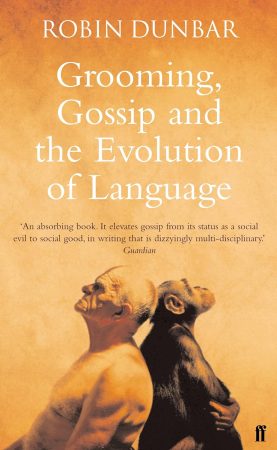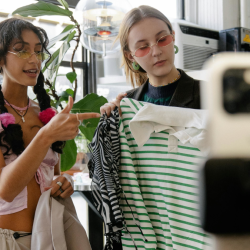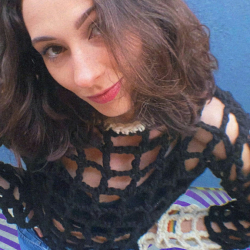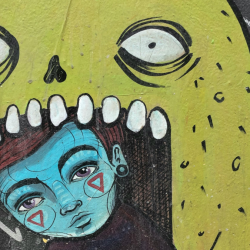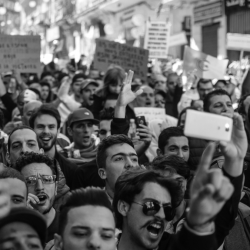Much has been written about how big tech and marketing are gaming our basic need for approval and desire for glory in order to capitalise on our time and attention. Slaves to the algorithm, we keep clicking our lives away, sacrificing real-life experiences that could make us happier.
Social media 1.0 worked on the assumption that everyone wants their Warhol-esque burst of fame — from daredevils and gym bunnies to cake makers and mumpreneurs. Influencers rose to prominence, accruing social capital/access to eyeballs that they could trade in for cash. But as the influencer landscape fragments, taking an anthropological view can shed light on who is paying attention to who, and why.
We gathered insights from social scientists to help marketers cultivate more positive engagements.
1. Gossip has a serious social function
Grown-ups despair when youngsters spend hours obsessively Snapping, posting and chatting with their peers. But there are good reasons for it. Early humans spent around half their time grooming — much more than is needed for hygiene — since it was a way to show alliance and bond, forming networks and hierarchies, which determined access to food and mates, and protection from conflict. Feeling you belonged to the group was a life-or-death situation throughout human evolution, so it runs deep. Professor Robin Dunbar is an anthropologist and evolutionary psychologist at the University of Oxford, famous for ‘Dunbar’s number’: the theory that our brain size limits us to about 150 meaningful relationships. He argues in his book Grooming, Gossip and the Evolution of Language that language arose as ‘verbal grooming’, liberating early humans from hours of nit-picking and driving our development as a species. (What large language models will do on this front remains to be seen.)
2. People don’t gather in homogenous groups (they’re clumpy)
When asked about marketing for MediaCat, Professor Dunbar said he was not keen on the term ‘demographics’ or trying to appeal to homogenous groups of people: ‘It’s quite clear that people simply aren’t homogenous. They’re more clumpy, and that clumpiness is produced by their interpersonal contacts at the local level.’ He says there are two separate dimensions of ‘influencers’ that impact behaviour.
‘One is the great and the (not so) good — TikTokers, film stars, pop idols or historically the royalty and nobility. And then there’s your little local face-to-face group. A lot of that works because of a desire to be in the in group, and therefore to be able to wave the icons of the “in” group about. At an everyday level, that’s actually how we build friendships. And our local face-to-face social network is all built out of homophily.’
This is the tendency for people to seek out or be attracted to those who are similar to themselves.
3. Not everyone wants to be famous
In the Sixties Andy Warhol said that in the future, everyone would be famous for 15 minutes — although he was surrounded by attention-hungry Manhattan scenesters. Digital culture has offered a platform for more people to experience a kind of fame, and many have. It feels good to share information about yourself — producing a burst of activity in neural regions associated with pleasure, motivation, and reward.
But people are posting less on social media and browsing more, as the problems of misinformation, being taken out of context, excessive ads and bots suck the fun out of sharing publicly. Dunbar says successful social groups are characterised by diverse character types: ‘With small scale networks, a mix of personalities improves the efficiency with which your network works enormously. But this is only possible because these people we describe as extroverts are effectively show-offs. It’s the followers that create the leaders.’ Influencers could be seen as the group’s show-offs, but as the platforms mature, their sway is losing its hold.
There’s a wealth of content users are actually interested in, reducing the efficacy of promotional content. Monoculture is splitting into countless subcultures, as users are less focused on following and liking and more on building communities.
Smart marketers have shifted from throwing money at the influencers and awaiting a trickle-down effect, towards engaging with smaller communities by storytelling authentically for that niche group.
4. Identity expression is more ephemeral than ever
Marketers seek to provide young social media users with, if not a shot at fame, then the means to express their identities. Iveta Hajdakova, anthropologist and Associate Director of Stripe Partners — a consultancy which has run multiple studies on young people — says that this focus is misplaced: ‘The advertising industry has been obsessed with identity for decades, operating in the belief that the most powerful driver of engagement for young people is the desire to find one’s identity and then express it authentically.’ She says: ‘Today’s digitally reproduced, algorithmically driven culture does not provide a stable enough system of meanings, symbols and relationships for young people to identify with or against.’
Hajdakova says this means that they reject labels and engage in what can be seen as ‘identity play’, taking a more fluid approach to navigating multiple identities. ‘The identity-oriented idea of social media, with its attention to profiles and status updates, worked for adults in the 2000s, but it doesn’t work for teens in 2024.’
5. Communities unify, but they also divide and create insecurity
When we join a group that presents benefits and a sense of belonging, we risk losing that, and have to engage in work to maintain it, among others with their own agendas. Hajdakova says we should be critical of the idea that communities of people with shared identities are a universal solution to improving social experiences online. ‘The search for communal identities always divides and separates. The desire for belonging is a desire for safety and security but, ironically, it can also exacerbate the sense of insecurity.’
Given Professor Dunbar’s thoughts on diversity strengthening groups, does he think the internet’s connective capacity to create the ultimate diverse group will make the human race more efficient — and better? ‘No,’ he says. Why not? ‘Because it’s too big.’
The internet? ‘No, the human race is too big. Everything we’ve learned about the nature of communities and networks in the last 20 years, tells me now that demography is the key to everything — starting with the primates and ending with humans. It’s a constant battle to prevent communities disintegrating under their own weight, basically, simply because the more individuals you have in the group, the more stressful it becomes. And this, I suppose, is one of the benefits of the online world – individually, you’re not competing to be part of the group in the way you are in a face-to-face world.’
Tell that to teenage girls fixated on their phones.
Featured image: Obi – @pixel8propix / Unsplash





















